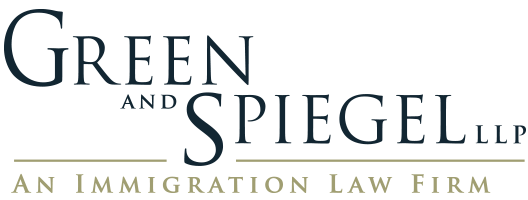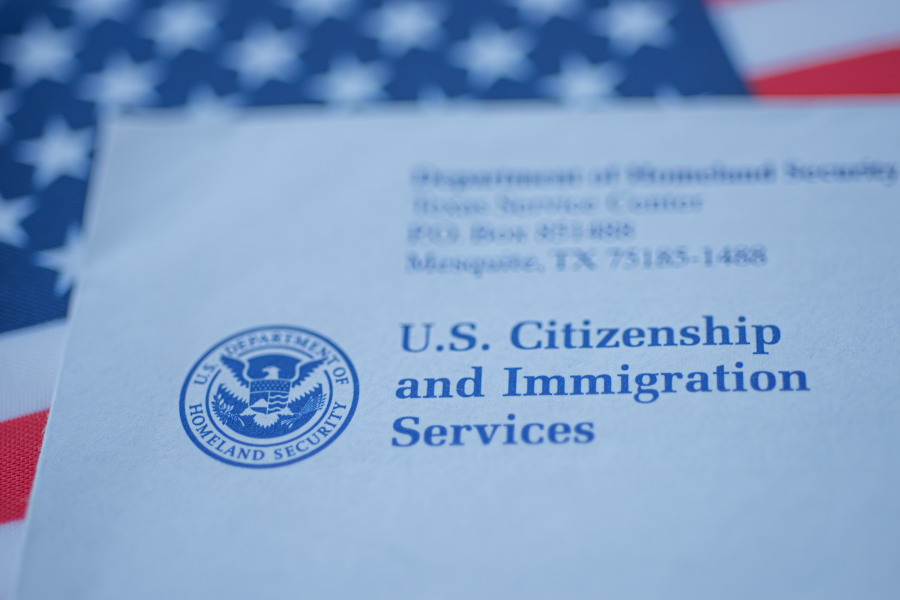Takeaways:
There are four significant takeaways to the recent announcement that the U.S. Department of Homeland Security (DHS) and the U.S. Department of Labor (DOL) are more closely collaborating on employment-based immigration matters:
1) Technology investments allow agencies to conduct far better analysis, investigation, and reporting than before and this affects risk analysis since the business costs of reacting to enforcement are much greater than proactive policy and procedure changes;
2) The Trump Administration’s H1B visa enforcement focus has forged relationships between agency enforcement components which will be difficult to unravel, even if there is a new U.S. president in January;
3) Greater DHS and DOL cooperation on employment-based immigration matters fits into the broader, post-911 goal of creating a seamless immigration system which is highly visible across the life-cycle of immigrant filings; and
4) These changes are not all bad news for businesses and industries which rely upon business immigration filings since mistaken, negligent, and fraudulent filings consume visas needed by legitimate filers.
Summary:
The U.S. government and state agencies which regulate recruitment, hiring, and employment are integrating. They are sharing more information and increasingly possess tools for analysis, investigation, and reporting which rival those of the private sector. This makes the practical costs of mistakes, negligence, and fraud more significant and suggests that businesses look carefully policies and procedures to mitigate risk.
Background:
American immigration law is largely regulated by three “sister” agencies: Customs and Immigration Enforcement (ICE), Customs and Border Patrol (CBP), and U.S. Citizenship and Immigration Services (USCIS). All three are in DHS and this gives Homeland Security claim to being the nation’s immigration enforcers.
The reality is more complex than this. U.S. immigration authorities are shared by other departments, most notably, the U.S. Department of Justice (DOJ) which houses the Office of Immigration Litigation, the Executive Office for Immigration Review, the Immigrant and Employee Rights Section (IER), and the Federal Bureau of Investigations. DOL also has immigration regulatory functions through the Office of Foreign Labor Certification (OFLC), the Wage and Hour Division, and DOL Criminal Investigations. It is helpful to keep in mind that the U.S. Department of State has both adjudication and investigatory authority over immigration matters too and that many state departments of labor regulate through parallel and related laws and regulations.
Back in December Green and Spiegel published a piece entitled “Government Is Using Information in More Effective and Efficient Ways than Ever; Companies which Adapt to this New Reality Will Thrive,” The thesis of the piece is that technology investment makes it possible for agencies to share, analyze, and use information in ways never before possible for the U.S. government. It follows that honest mistakes, negligence, and criminality are more likely to be noticed and acted upon.
Yesterday, Bloomburg.com published a piece titled “U.S. Labor, Immigration Agencies Team Up on H-1B Enforcement,” noting that:
The DOL’s greater involvement in investigating potential violations of the Immigration and Nationality Act’s temporary visa program for high-skilled workers also represents the first time the agency’s secretary has exercised this authority to personally initiate “more robust examinations” of employers’ use of H1B workers…
This lowering of the wall between DOL and DHS information sharing is an illustration of the point made in the “Government Is Using Information…” piece referenced above and suggests that companies accustomed to employing foreign workers should self-audit records, policies, and procedures, take deliberate steps to align those functions with state and federal law, and document those efforts in ways advantageous to the company during an enforcement action. This requires a proactive stance, more in line with the Health Insurance Portability and Accountability Act (HIPAA) or the Foreign Corrupt Practices Act (FCPA) compliance focus than some companies are accustomed to.
These changes fit within the general movement towards greater inter-agency cooperation and incorporation of technology into agency operations:
I first went to the Federal Law Enforcement Training Center (FLETC) in 1995. Much of what we learned there was law and enforcement techniques which focused on human interactions. We learned systems work too but this was not the focus of Immigration and Naturalization Service (INS) training at the time. This was because technology-focused adjudication, analysis, investigation, and reporting was impossible due to INS’ antiquated systems.
The situation had not much improved by the time the INS was abolished in 2003; the underlying systems still had low compatibility to the home-grown Access and Excel record and analyses applications sprinkled through agency’s offices. In practical application, this meant that working on a large-scale, employment-based immigration fraud case required ordering potentially hundreds of files and looking for commonalities within paper records. Anomalies were tagged with sticky-notes, placed into piles and boxes to segregate the information by type, and then physically entered into spreadsheets for analysis and reporting.
This laborious process required subtle distinctions and analyses to determine which anomalies were mistakes, which were negligence, and which were criminal. This is one of the reasons that USCIS, CBP, and ICE pursued only the largest cases and the reality of this human-centric operational approach for petitioning companies was that consistency within the filing itself was important to adjudication but consistency between all of the filings presented by the company was not.
For example, suppose Company X misrepresented information to USCIS to obtain an H1B visa. In the past, that filing would stand alone, not compared to any other of the company’s filings unless its internal inconsistencies suggested fraud. Now, though, the information on which the filing is based is being captured and compared to the company’s other filings. Any mistakes, negligence, or fraud is much more likely now to be noticed.
It isn’t just the incoming data that has changed, local, state, and federal agents now have access to much of the same smart technology on which private businesses rely. Whereas determining whether an anomaly was evidence of a mistake, negligence, or fraud was a human-centric analysis for much of my career, bound by the competence of the analyst, it is now heavily influenced by systems which automatically highlight and correlate information.
For example, back in the mid-2000s, I investigated a case in which an H1B petitioner had several companies, each with their own Employer Identification Numbers (EINs), business addresses, and principal officers. To all appearances, they were distinct IT companies with their own contracts and H1B beneficiaries. In reality, they made up a single “body shop,” a company whose only real business was to bring foreign nationals to work in the United States.
The prosecution presentation was based upon the physical contracts which, lifted from each of the files, demonstrated that each of the companies were “contracted” to provide IT services to each other but no services to any company outside of that group. The claimed work didn’t actually exist. When the case as prosecuted, the government demonstrated that none of the H1B beneficiaries were paid by the petitioning company and that all had found their own contract IT work, sending a portion of their income back to the petitioner in payment for those fraud services.
By the time I left government service in June of 2019 though, USCIS’ Office of Fraud Detection and National Security (FDNS) was investigating dozens of such schemes simultaneously. USCIS service centers were collaborating with field FDNS components, ICE and CBP officers, and DOL agents to interrupt such fraud schemes and free up H1B visas that were diverted to fraudulent entities for legitimate filers.
As applied to the July 31, 2020 announcement that DOL and the three sister agencies (ICE, CBP, and USCIS) are more closely collaborating on H-1B enforcement, adding DOL Office of Foreign Labor Certification (OFLC) information to the investigation pool of data is bound to expose petitioning companies to greater scrutiny. Honest mistakes, negligence, and fraud will be more evident when the entire life-cycle of H1B filings, from OFLC initial filing, through USCIS and DOS adjudication, to CBP admissions are accessible to analysts.
What does all of this mean for your businesses?
As discussed more fully above, businesses have instituted a number of significant compliance protocols to address high-cost regulatory risks; among which have been the HIPAA and FCPA compliance programs. Many companies have hired compliance managers to oversee these operations, applying, as one company owner explained to me, the “if it’s everyone’s responsibility, it’s no one’s responsibility” principle. It doesn’t appear that this risk-mitigation approach has spilled over into immigration matters though since many companies have dissevered records which serve them badly in filing, maintenance, and responding to enforcement actions.
The opposing temptations to address every new filing as utterly distinct from past filings and to treat them as essentially the same are very strong but neither serves businesses well. This is particularly true for immigration filings now that the government has adopted a more aggressive enforcement posture and has the tools to compare discrete data from filings. With DOL onboard, adjudicators, analysts, and investigators will be able to look at data across the entire chain of employment-based immigration filings, from the initial claims in the labor certification to the evidence presented in filing for a Green Card.
This changing reality demands an evolution of business approaches to the recruitment, hiring, and employment so-as-to minimize mistakes, exercise due diligence, and address any enforcement actions that are initiated.
In closing:
Businesses adapt and evolve or suffer for failing to do so. This is the nature of private entities and it is one of the principal ways that companies are different from the government agencies which regulate them. Whereas government agents remain employed, largely regardless of performance, and agencies retain their assets and authority regardless of accomplishments, companies enjoy no such protection.
Agencies now have the tools to assess information, and act on what they find, in ways as robust and creative as the businesses they oversee and it is wise to periodically assess whether our recruiting, hiring, and employment policies and processes are serving us well. Business, employment, and immigration law are dynamic and this invites attorney involvement in these adaptions; success hinges on adopting approaches which are practical and tailored to the business.
Companies which embrace policies and procedures which are difficult to implement will struggle to benefit from those changes. Good legal counsel must approach the business needs seriously and engage management and supervision in ways which honor the institutional culture if changes are going to be implemented effectively. Done properly, the costs of implementation will be far less than enforcement fines, penalties, loss of productivity, and sanctions would be.
My compliance and enforcement practice is perfectly positioned to help. We have the experience and capacity to serve client compliance interests well. If your company wants help with such matters, please contact our compliance and regulatory enforcement team at Green and Spiegel U.S.. You can also call or text me directly at 484-645-4194 or email me at dspaulding@gands-us.com.
DISCLAIMER: Please note, nothing I post here is legal advice, nor does reading anything I write or communicating with me on or through social media form an attorney/client relationship between us. Choosing an attorney is a serious matter and should not be based solely or primarily on advertising or any other public communication of an attorney or law firm.




